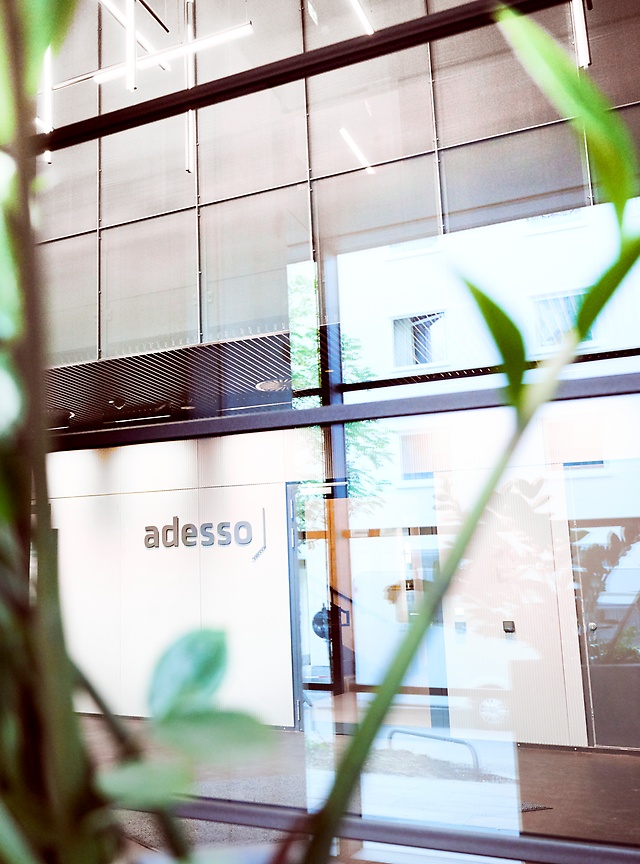22. March 2023 By Maximilian Hammes, Jonas Schnorrenberg and Stephen Lorenzen
Quarterly check-in Q1/23 – what is the status of the energy crisis?
The energy crisis in Germany describes an economic crisis in which energy sources are becoming scarce and/or energy prices are rising far above the general inflation rate. In this first article, we will explain how energy prices have developed in recent months and what measures the German government has introduced to counteract the crisis.
What is the current cost of energy?
If we look at energy costs, we see that the price of gas doubled at times as a result of Russia’s war of aggression against Ukraine. The price of a kilowatt hour (kWh) of gas before the war in February 2022 was 12.3 euro cents and rose in September to a maximum of 39.9 euro cents per kWh. It has returned to 11.1 cents per kWh in the meantime. Electricity became one-quarter more expensive and the displays at the petrol stations showed record values of over €2.20 per litre of petrol. Before Russia’s attack, 1 kWh of electricity cost 37 cents. The electricity price then peaked at 70 cents/kWh in September. Currently, the price for 1 kWh is hovering around 37 cents.
The reason for the price increases for gas and electricity were price spikes in the procurement markets, triggered by the war in Ukraine and the resulting sanctions against Russia. The filling levels of German gas storage facilities were already at an all-time low last winter. Rising gas prices also made wholesale electricity prices more expensive, despite the elimination of the levy under the Renewable Energy Sources Act.
Rising gas prices have also made industrial products such as fertilisers more expensive. In turn, this has an impact on food and wheat prices. In addition, the sanctions against Russia are causing crude oil prices to rise, which also affects the prices of petrol, diesel and heating oil.
However, in the first quarter of 2023, we observe that the price of electricity and gas has recovered despite all these influences, so that the current price of these two resources has returned to a level from before the start of the war.
How dependent is Germany on Russian gas still?
The second escalation stage of the Emergency Plan for Gas has been in effect since the end of June due to the disrupted gas supply. The German government’s declaration of the alert level allows it to increase the use of coal-fired power plants again in order to reduce gas consumption in electricity generation.
Currently, 14.5 per cent of natural gas is used for electricity generation, whereas it was only 16 per cent in 2021. According to the German Federal Ministry for Economic Affairs and Climate Action (Bundesministerium für Wirtschaft und Klimaschutz, BMWK), it is not possible to completely ban natural gas from electricity generation because it is mainly used to generate electricity in combined heat and power plants, which are important for heat generation.
Half of Germany’s gas and coal imports and one-third of its oil came from Russia before the Russian attack on Ukraine. That is why the German government has been trying to free itself from its reliance on Russian energy imports since the outbreak of the war. As we all know, the planned commissioning of the Nord Stream 2 gas pipeline has been stopped. Moreover, no more gas has flowed through Nord Stream 1 since August 2022. At the end of September, gas leaks occurred in the Nord Stream 1 and 2 pipelines.
In order to become independent of Russian gas, stricter requirements for the fill level of gas storage facilities came into force at the end of July 2022. On 1 October 2022, the reservoirs should have been 85 per cent full and on 1 November 95 per cent. Both of these levels were exceeded, which meant that in the German gas storage facilities were even 100 per cent full in mid-November 2022.
The German government focused on the construction of several LNG terminals for gas ships in order to reduce dependence on Russia. LNG was already being supplied from a floating terminal in Wilhelmshaven in the first quarter of 2023. We have already reported on the status quo of the LNG projects . The German government managed to fill the gas storage facilities above the target of 40 per cent. Currently, the German gas storage facilities are almost 70 per cent full. The German government also succeeded in doing this because it increased its reliance on gas imports from its European partners.
Germany no longer imports gas directly from Russia as of September 2022. In addition to gas imports via the LNG terminals, Germany mainly imports gas from Norway, Belgium and the Netherlands.
Overall, the government has managed to keep its gas storage at a safe level so far by reducing gas consumption and using imports from alternative sources. According to Robert Habeck, Federal Minister for Economic Affairs and Climate Action, gas consumption in Germany is to be reduced by 15 to 20 per cent compared to the previous year in order to continue to ensure this.
The government has succeeded in filling the gas storage facilities to almost 65 per cent to date by restructuring and diversifying gas imports. In contrast, the gas storage facilities were only 26 per cent full at the same time last year.
Independence through renewable energies?
More than half of the electricity generated in Germany often comes from renewable energy sources such as wind and solar power. At night when the wind dies down, more electricity from gas-fired, coal-fired and nuclear power plants is fed into the grid.
The energy crisis shows the importance of expanding renewable energies. That is why the German government decided at the end of 2022 that wind power and the grid expansion should be accelerated. This is made possible by the EU’s temporary emergency regulation, which was adopted on 19 December. It serves as a clear means to accelerate the approval processes. It is now to be adopted into national law through amendments to the Onshore Wind Energy Law, the Offshore Wind Energy Act and the Energy Industry Act. To this end, the German Cabinet has approved a specific phrasing that will be introduced into the parliamentary procedure for amending the Regional Planning Act. The following core contents are planned:
- The regulation will apply to all approval procedures for onshore wind turbines, offshore wind turbines and electricity grids with a capacity of 110 kV and higher and are commenced before 30 June 2024. Approval procedures that have already begun can also benefit from the easing of restrictions.
- Simplified authorisation procedures for onshore wind power plants, offshore wind power plants and grid infrastructure projects for renewable energies and designated grid areas. In this manner, an environmental impact assessment (EIA) and a species protection assessment are waived in the approval procedure for designated renewable energy and grid areas that have already undergone a strategic environmental assessment (SEA).
- However, in order to safeguard the interests of species protection, the relevant authorities must ensure that the operator of the planned installations takes appropriate and proportionate avoidance and mitigation measures, that is, takes measures for the protection of species. If such measures are not in place, the operator must make a financial contribution to a species protection programme. The assessment is based on existing data.
In addition, the EU’s temporary emergency regulation contains further provisions regarding acceleration that are directly applicable and therefore do not need to be implemented in national law.
- The EIA is limited to a delta test, that is, the additional load of the new plant or line compared to the existing plant or line, when it comes to the repowering of renewable energy plants. When repowering solar plants, the EIA obligation can be waived completely under certain conditions.
Repowering means that a larger wind farm with many older turbines is replaced by a new wind farm with often significantly fewer turbines, for example. Generally, the new plants are much more powerful and efficient. More electricity can usually be fed into the grid with fewer systems over the same area.
- Acceleration for the installation of solar energy systems. The amendment reduces the duration of the approval procedures for the installation of solar energy systems to three months. Furthermore, for installations below 50 kW, a waiver of notice applies, that is, if the relevant authority does not decide on an approval that has been applied for within a certain period of time, the approval is deemed to have been granted.
- Acceleration for the expansion of heat pumps. The regulation reduces the duration of approval procedures for the installation of heat pumps with an electrical output of less than 50 MW to one month and to three months for ground-source heat pumps.
Conclusion
Germany has managed to become independent of Russian energy since the beginning of the Russian war of aggression against Ukraine and secure its energy supply by acting quickly. The German government continues to work at full speed to reduce dependence on fossil fuels in order to improve climate protection and secure the energy supply. To this end, the German government pulled out all the stops early on to end its dependence on Russian energy as quickly as possible. To this end, the basis of the energy supply as a whole was broadened. As the German government initiated important measures that have already paid off in the first quarter of 2023, it has been possible to fill the gas storage facilities sufficiently without using gas supplied directly from Russia and thus reduce the shortage, which could stabilise prices again. At the same time, the German government has pushed through legislative changes that will double the capacity of wind energy by 2030. In order to achieve this goal, the federal states must now make use of the new approval options. After all, we need a pace that is similar to that for the construction of the LNG terminals in order to achieve these goals.
We will let you know at the end of June how the energy crisis and the expansion of renewable energies will develop in the next quarter. We will keep you posted with all the latest updates.
You will find more exciting topics from the adesso world in our latest blog posts.



